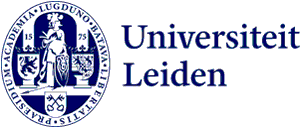
Hunting for life’s building blocks at minus 250 degrees Celsius
Searching for life’s building blocks lightyears away is an important task of the James Webb Space Telescope. But how does it know what to look for? PhD student Marina Gomes Rachid is offering a helping hand by mapping out molecules that could exist in deep space.
Imagine the headlights of a car on a misty day. A beam of light becomes visible in the fog, revealing particles of moisture floating in the air, absorbing and reflecting the light. Similarly, the James Webb Space Telescope (JWST) observes how stars send infrared light through space, making the molecules it meets along the way visible. In seemingly empty areas of space, clouds filled with the smallest of particles appear.
Invaluable dataset for the James Webb Space Telescope
But it is very challenging to identify the molecules that the infrared light reveals remains very challenging. Even for a sophisticated device like the JWST, that is the largest of its kind.
That’s where the research of Gomes Rachid comes in. Over the past four years, during her PhD at the Leiden University Laboratory for Astrophysics, the Brazilian identified some of the molecules the space telescope might come across. Thanks to this research, she could provide the JWST with an invaluable dataset.

Discovering the ‘Chemistry of the skies’
Marina calls it the ‘chemistry of the skies’: looking at the stars from a chemist point of view. This offers a whole new perspective. Space might be unmeasurably vast, but every planet or comet is made up of tiny molecules, too small to even see with the naked eye. And they tell you more than you might think about our universe and ultimately ourselves.
Gomes Rachid is interested in the molecules that are created during the early phase of the formation of a new star, when a huge cloud of gas and dust floats around in space. It’s where the cosmic chemistry happens.
So cold almost all materials freeze
Earlier research had already shown that many organic molecules are present in this kind of interstellar gas. Organic molecules are compounds that contain carbon (C), such as methane (CH4), and they are key to life. But the PhD candidate wanted to go one step further and find out where these molecules are formed.
To do this, she had to simulate the conditions of the deepest core of these gas clouds. There the temperature can reach as low as minus 250 degrees Celsius, causing almost all materials to freeze. ‘In this cold interior, the cosmic air is a bit denser’, Gomes Rachid says. ‘That means atoms and molecules move closer to each other in the frozen material and new molecules are formed.’
Observe how molecules absorb infrared light
In the Leiden laboratory, she observed how these frozen organic molecules absorbed the infrared light shined upon them. Looking at how each molecule absorbed the light, she measured its ‘fingerprint’ and added it to a database. Thanks to this information, the James Webb Space Telescope now knows precisely what all these tiny molecules look like in infrared light.
Molecules lightyears away from us might sound a little abstract, but they do tell us something about where life comes from. ‘If these molecules are present in the frozen cores, as we expect them to be, it would mean prebiotic molecules can be formed in space’, Gomes Rachid says. ‘You could consider them as the starter kit for life. So eventually, this is also about our own origin.’
Marina Gomes Rachid will defend her thesis ‘The hunt for frozen organic molecules in space - A laboratory approach’ on 9 May in Leiden.
Text: Samuel Hanegreefs
